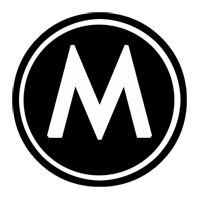The Printed Image
Black & White Prints
My black and white images are printed in my studio using an advanced black ink system called Piezography developed by Jon Cone in his Vermont studios. The 9 cartridges in my Epson printer are replaced with 9 black ink carts, each carrying a different shade of black carbon selenium ink. This range of black shades enables the print to have a tonal range and detail fidelity that far exceeds other gliceé processes, as well as traditional silver printing. The results are absolutely stunning. As soon as I tried this process in my studio I was hooked and haven’t looked back. If you want to know more about the technique, please check out the source material at piezography.com.
Color Prints
My color images are printed using the gliceé method on a 300gsm heavy weight matte acid free paper. I've printed my color work on all kinds of surfaces, from thin glossy paper to metal. My favorite is consistently a heavy weight, matte surfaced paper. Unlike a black and white print that looks muddy on a matte paper (because it loses gloss differential), a color print glows and the heavier paper adds beautiful texture that further enhances the image. My wide view images have an angle of view similar to what the eye sees and, when printed large, feel immersive, like you’re standing on the edge looking out onto the landscape. The sense of depth and feeling is stunning to see in person.
Frames
Want a piece framed and matted, let me know and we’ll figure it out together.
A Print’s Value
The value of my prints does not stem from false scarcity or acquisition through a traditional gallery space. The value of my work lives in my creative ethos, in my observation of the world, and how I interpret all that into art. The above technical attributes of my prints are just the archival standards of the materials used. What you are acquiring with my work is a little piece of the quiet solitude of walking in the wilderness, of experiencing something deeper than simple ornamental beauty. I stand by my interpretations, for they are a part of me and therefore a part of my art.
My Print Ethos
Art should be seen and shared, and therefore photography editioning has always turned me off. There is no original in photography except for the negative or digital file. There is no original in the sense that a painting is an original. The idea of editioning stems from printmaking, where the block physically wears down over time, decreasing the detail of each subsequent press. Photography has never been like that. The negative is never touched and therefore the photographic print can be endlessly printed. It's called a print for a reason, not an impression or a pressing. With this in mind, editioning becomes a business decision, a way to introduce scarcity and increase perceived value. That to me is ugly. The price of my work is based on me, as an artist. I do not edition or number my prints. Freeing myself from the confines of editioning also frees my creativity. I am no longer locked in to one print size or technique and I am left open to experimentation with paper surfaces, sizes and anything else that interests me as an artist.
CLICK TO READ MY ARTIST STATEMENT
